"The guitar and its case were smashed to bits. We never even bothered to pick it up." Was George Harrison's 1963 Country Gentleman really destroyed in a Beatles road mishap? The evidence says no
The discovery of Paul McCartney's stolen Höfner bass this past year offers new clues to the Gretsch guitar's fate
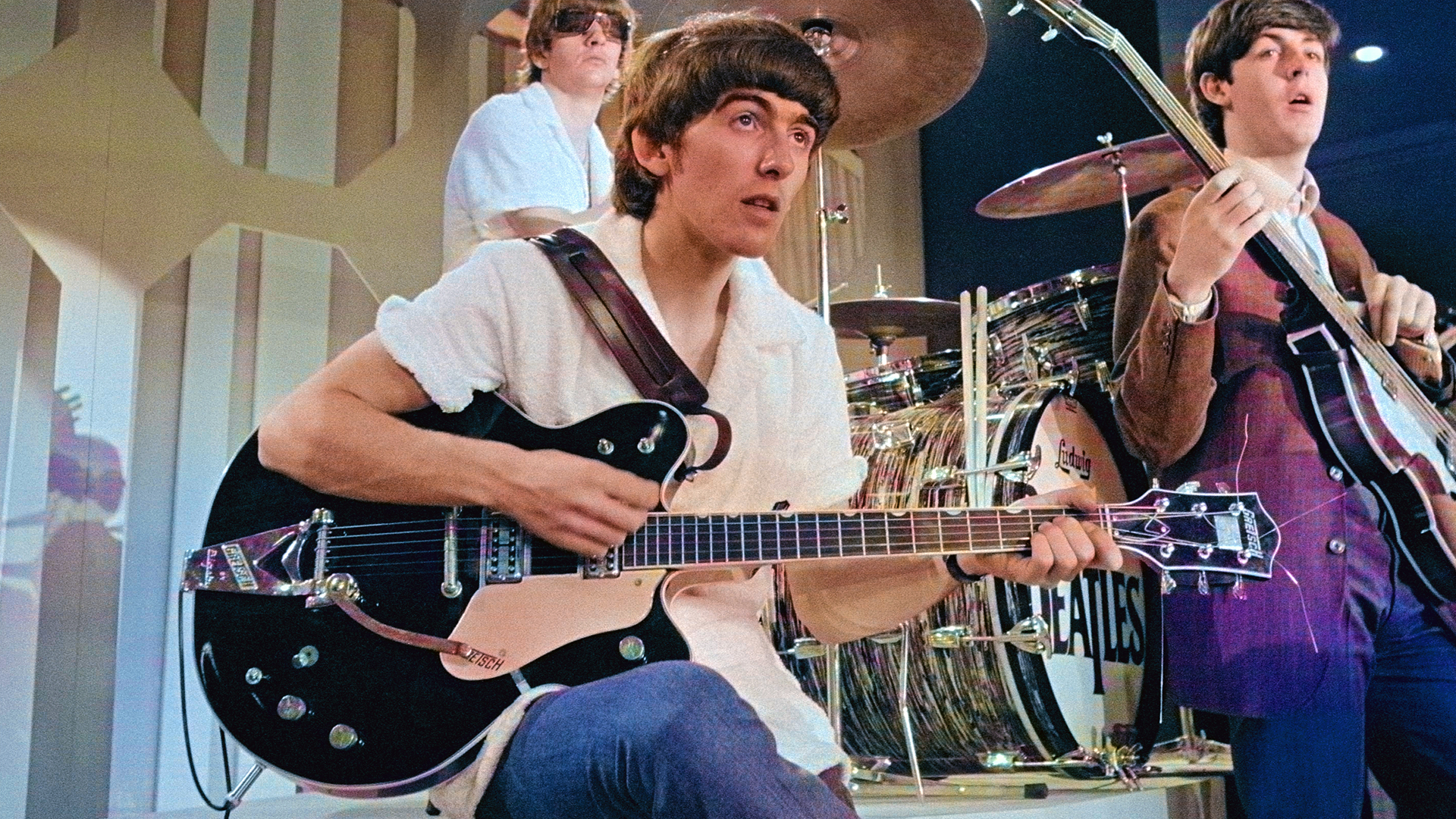
This past year saw the unraveling of one Beatles guitar mystery when Paul McCartney’s first Höfner bass was discovered more than 50 years after it was stolen. That guitar had been the focus of the Lost Bass Project, which tracked down the Höfner in the loft of a family home in East Sussex, England.
But the discovery of McCartney’s 1961 Höfner has opened up a new mystery in the world of Beatles guitar gear: Was George Harrison’s Gretsch Country Gentleman electric guitar really destroyed in a 1965 mishap during the Beatles’ Scotland tour? Or was the victim actually another guitar?
According to Beatles history, Harrison’s Country Gent — his second — was smashed to pieces on the evening of December 2 as the group journeyed from London in their Austin Princess limousine for a December 3 performance at Glasgow’s Odeon Cinema. Beatles chauffeur Alf Bicknell was left to transport two guitars after roadie Mal Evans left with the Beatles gear van ahead of the group.
As Bicknell told Andy Babiuk in Beatles Gear, the guitars were “a Rickenbacker and a Country Gentleman.” He further noted that it was “very rare for me to carry anything like this.”
Indeed it was, since his car was already carrying the four Beatles and their road manager, Neil Aspinall. With no room for the guitars inside the vehicle, Bicknell strapped them to the back of the car and drove off into the growing darkness.
As the group was about 30 or 40 miles on their journey, a truck behind the car began flashing its lights, a sign for it to pull over. Bicknell stopped off the road, followed by the truck driver.
“He said, 'You’ve just lost a banjo,' ” Bicknell recalled. The chauffeur looked at the back of the car and discovered, to his dismay, that one of the guitars was missing.
All the latest guitar news, interviews, lessons, reviews, deals and more, direct to your inbox!
Retracing their path for roughly 12 miles, the entourage came upon the ruined remains of an instrument identified as Harrison’s Country Gent. “The guitar and its case were smashed to bits,” Bicknell said. “We never even bothered to pick it up.”
The Gent was one of two that Harrison owned. He purchased his first, a 1962 model with dark brown mahogany stain and screw-down mutes — a feature Gretsch added to achieve the effect produced by palm muting — in early 1963. Harrison would give that guitar to Brian O’Hara, lead guitarist for the Fourmost — a Liverpool group also handled by Beatles manager Brian Epstein — in 1965.
In the meantime, Harrison had received a second Country Gent in October 1963. It was identical to the first except that in place of screw-down mutes, it used a flip-up lever action to activate the feature.
Two months later, Harrison acquired yet another Gretsch: a 1962 or ’63 Tennessean. He used it for recordings and performances in 1964 and, more often, 1965. Beatles lore has it that the Tennessean was stolen from Abbey Road Studios following the group's 1965 tour, as it was never seen again afterward.
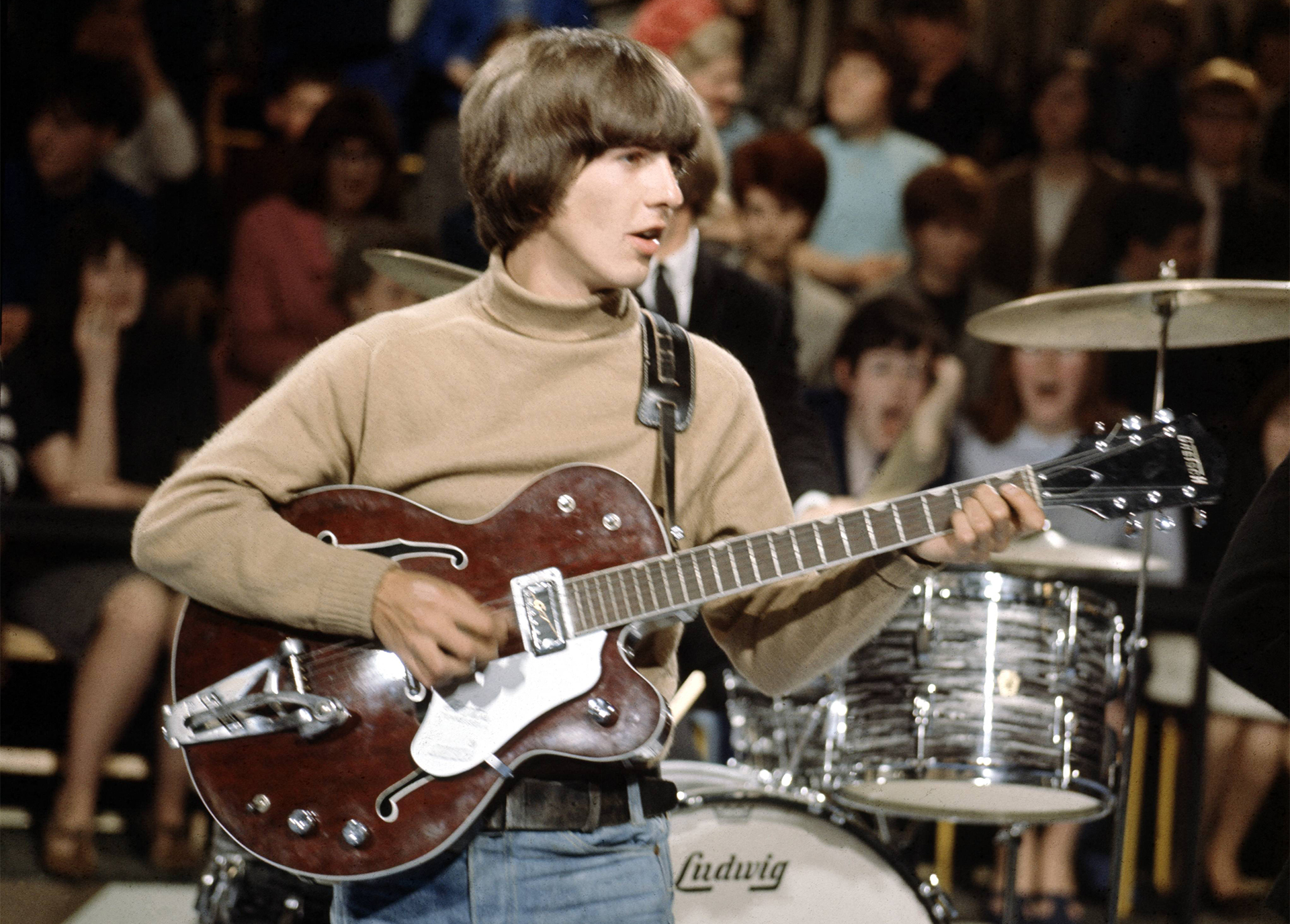
It’s here’s that a wrinkle emerges. Let’s go back to that night in December. After retracing the limo’s path, Alf Bicknell and the Beatles discovered the remains of Harrison’s guitar in the road. Bicknell says the guitar was abandoned when it was seen there was no hope of rebuilding it.
In fact the group did scavenge pieces of it. Neil Aspinall wrote a tour diary for the U.K. press at the time, and in his report detailing the events of December 2, he said the group retained a chunk of wood that included one of the guitar’s machine heads. He further noted that this came in handy when one of the tuners on McCartney’s bass became damaged on the tour. “We were able to replace it with bits taken from George’s Gretsch.”
Aspinall’s claim is born out by at least two Beatles-era sources. In the video for "Revolution," filmed on September 4, 1968, the chrome machine head from Harrison’s guitar is evident among the white plastic “Rugby Ball” machine heads that were stock on McCartney’s bass. The odd bright metal tuning peg can also be spotted in scenes from the 2022 Get Back documentary in which McCartney plays his first Höfner violin bass, and it's visible in new photos of the recently discovered instrument.
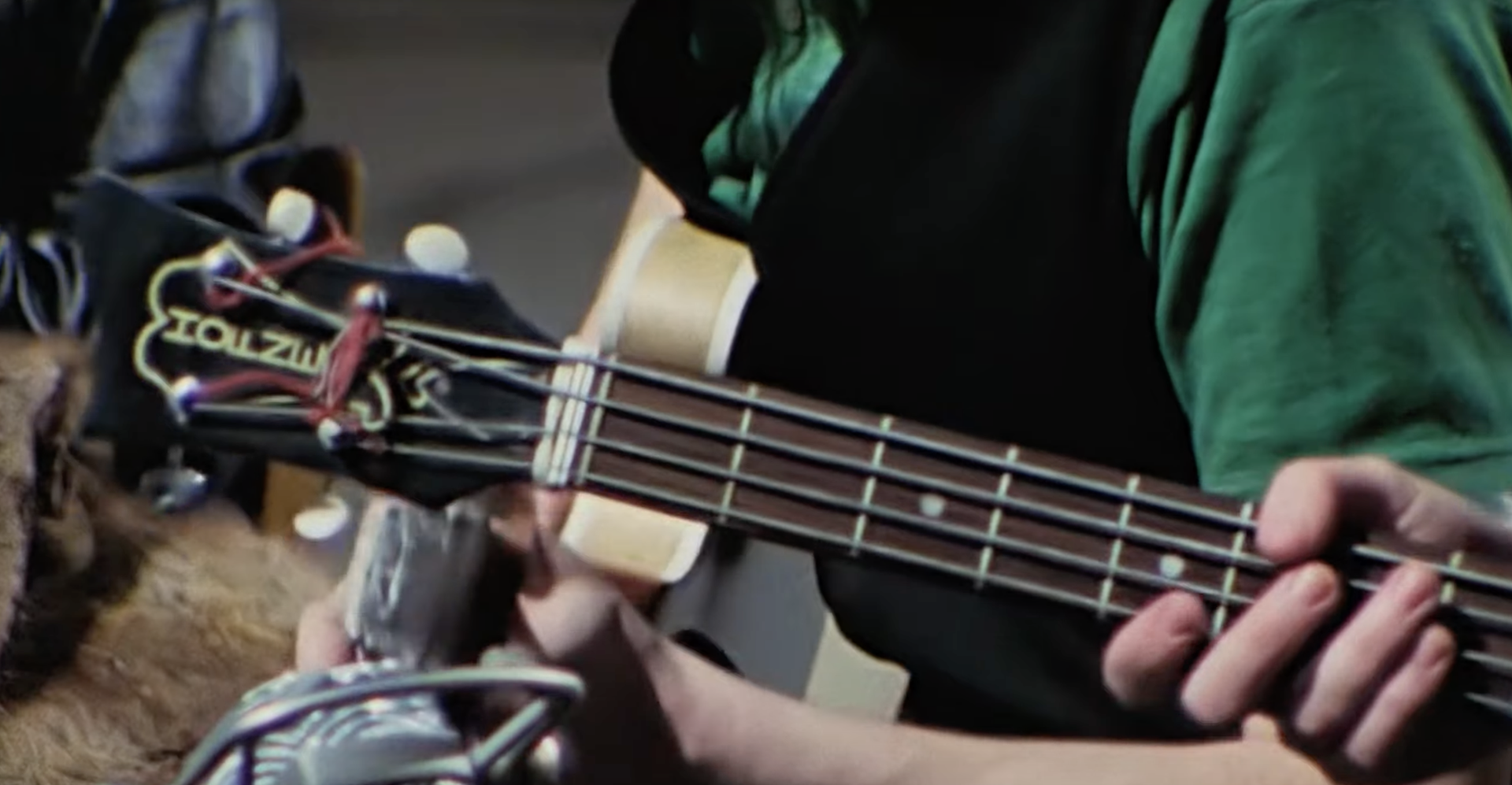
There’s just one problem: The machine head's tuning peg is a bright oval chrome button. The Gretsch Country Gentleman had gold "stairstep" Grover Imperial tuners.
And which of Harrison’s Gretsch guitars had chrome machine heads? The Tennessean.
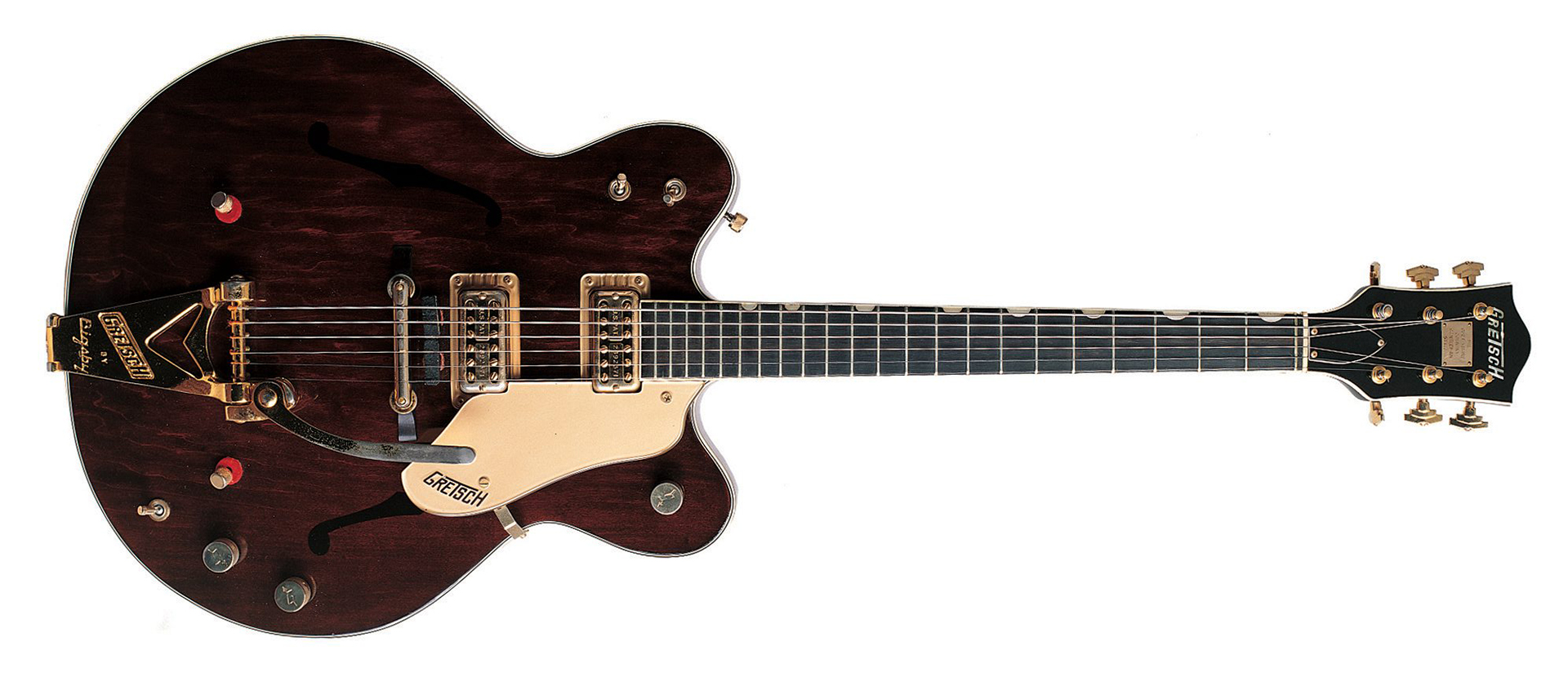
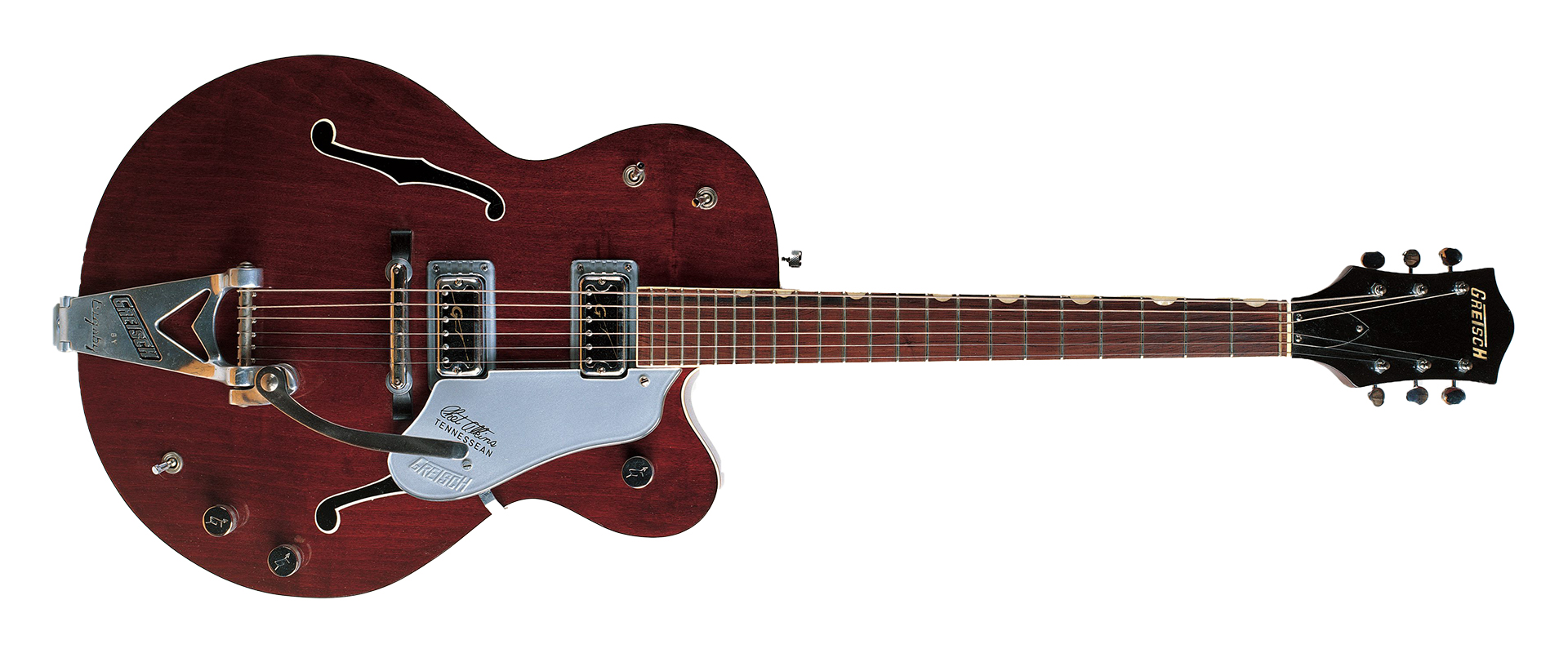
So is it possible that for years everyone has been saying the Country Gentleman was destroyed when in fact it was the Tennessean? Both guitars were never again seen in Beatles photos after 1965. And if the Country Gent wasn’t destroyed, where is it today?
Credit for this excellent sleuthing goes to Nick Martellaro, who regularly explores Beatles gear on his YouTube channel. I’ve linked his video on the Harrison guitar mystery below and highly recommend giving it a view to discover even more details about this important Beatles guitar. And while you're at it, check out his other excellent videos on Beatles gear.
Christopher Scapelliti is editor-in-chief of GuitarPlayer.com and the former editor of Guitar Player, the world’s longest-running guitar magazine, founded in 1967. In his extensive career, he has authored in-depth interviews with such guitarists as Pete Townshend, Slash, Billy Corgan, Jack White, Elvis Costello and Todd Rundgren, and audio professionals including Beatles engineers Geoff Emerick and Ken Scott. He is the co-author of Guitar Aficionado: The Collections: The Most Famous, Rare, and Valuable Guitars in the World, a founding editor of Guitar Aficionado magazine, and a former editor with Guitar World, Guitar for the Practicing Musician and Maximum Guitar. Apart from guitars, he maintains a collection of more than 30 vintage analog synthesizers.

